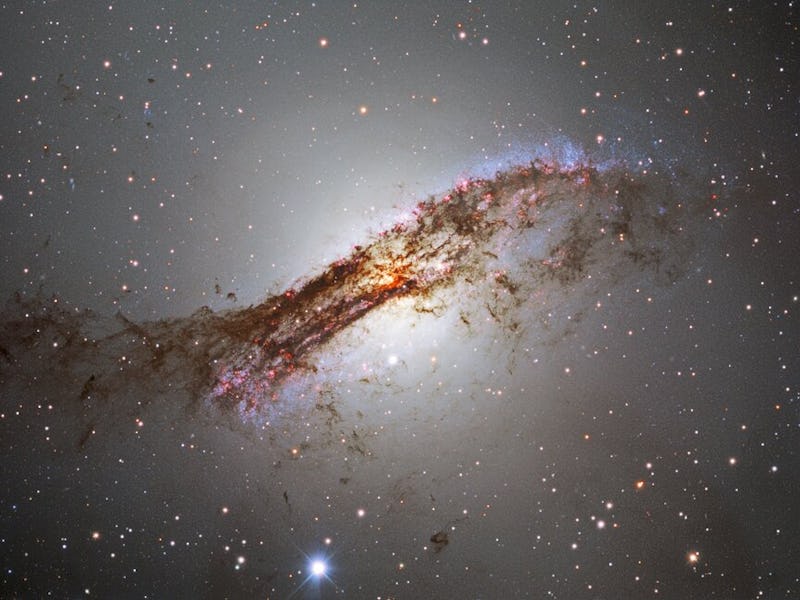A dark energy hunting telescope captures a weird galaxy in action
The strangely shaped behemoth gets a close-up.

Galaxies are scattered across the universe, each with a unique signature appearance that is telling of their past. And we now have an image of a bright, bright galaxy in action.
Astronomers pointed a dark energy telescope at a well-known large galaxy, capturing its strange shape in great detail. Centaurus A shined bright in a stunning new image, revealing the galaxy’s collision with a galactic counterpart millions of years ago.
A team of astronomers pointed the Dark Energy Camera on the Víctor M. Blanco 4-meter Telescope at Cerro Tololo Inter-American Observatory in Chile. The image was captured in several exposures between the years 2018 and 2021, and released on Tuesday.
The galaxy Centaurus A is the most studied galaxy due to its proximity and luminosity.
The image shows the bright streaks of the galaxy’s stars against the dark threads of dust blocking the view of the bright center of the galaxy. Young stars are forming in the lane of dust, which can be seen by the red clouds of hydrogen and large numbers of faint blue stars visible at each end of the thread of dust.
The dust is a result of a collision that took place in the galaxy’s past when it merged with a smaller spiral galaxy. That collision is also the reason behind the galaxy’s burst of star formation, resulting in its distinct brightness.
Where is Centaurus A?
Centaurus A is located 12 million light years away from Earth in the southern-hemisphere constellation Centaurus. It was discovered in 1826 by Scottish astronomer James Dunlop, who saw the galaxy’s bright light from his home in New South Wales.
Centaurus A is an ideal target for amateur astronomers because of its luminosity — it’s the fifth brightest galaxy in our night sky.
The galaxy is also famous for its supermassive black hole at its center. Radio telescopes have captured a massive jet of matter shooting out of the galaxy’s center at almost half the speed of light, making it one of the best sources of radio emissions in the night sky.
This jet exists because the center is home to a black hole weighing 55 million times the mass of the Sun.
The Event Horizon Telescope captured Centaurus A’s jets in action.
Black holes emit jets at nearly the speed of light after some matter, like hot gas or dust, falls towards their center. It then shoots out in the form of jets, or two short beams of material, from outside the boundary that surrounds the black hole. This boundary is also known as the event horizon.
In July 2021, astronomers captured the highest resolution images yet of these eruptive jets as they blasted from the black hole. Using the Event Horizon Telescope (EHT) — the same telescope used to capture the first-ever image of a black hole — the new image showed the center of Centaurus A in great detail.